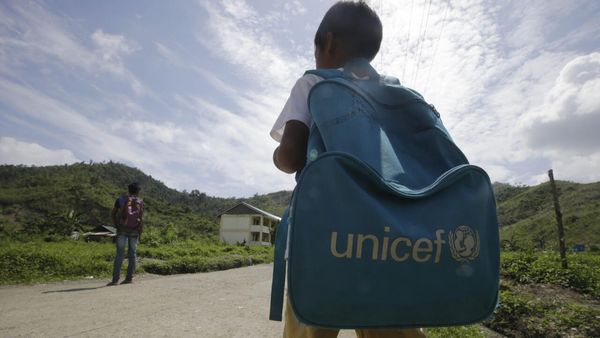For much of the pandemic, hiring in Seattle and across Washington outpaced the rest of the nation, thanks in part to a red-hot tech sector.
But there are growing signs — with lower hiring in tech, education and construction — that Washington's job market could be, as one economist puts it, "at the top of the roller coaster, about to plummet."
Washington employers added just 1,500 jobs in September, according to the state Employment Security Department's monthly report posted this week.
That's a huge drop from the nearly 22,000 jobs added in August. And while August was an unusually big month, hiring in September was barely a tenth of what Washington had been averaging each month since January 2021.
It's also well behind national trends: Washington has 2.3% of the nation's population, but accounted for barely half a percent of U.S. job growth in September, says Jacob Vigdor, an economist with the University of Washington Evans School of Public Policy who follows state and local job markets.
After "many months where Washington's job growth rate outpaced the nation's, that picture doesn't look so great now," Vigdor said.
Another worrying data point: Washington's unemployment rate was 3.7% in September, unchanged from August and July.
Although low unemployment can be a sign of strong hiring, the fact that Washington's appears stuck "creates worries that the [hiring] trendline is about to change direction," warned Vigdor. The result, he said, is a labor market that feels perched "at the top of the roller coaster, about to plummet."
Some industries, such as shipping, tech and business services, saw hiring gains in September. But that growth was nearly erased by large declines in others, including manufacturing and construction, which lost 1,300 and 300 jobs, respectively.
The biggest loser was the public sector, where employment fell by nearly 8,000 jobs, notably in local and state-level education.
"We usually expect to see large gains in government employment from August to September, as the school year begins for public K-12 schools and public colleges and universities," said Anneliese Vance-Sherman, a regional economist with the Employment Security Department who covers the Seattle area.
Instead, Vance-Sherman said, education hiring appeared well below normal September levels.
In some industries, hiring is still feeling the effects of the pandemic.
At many colleges and public K-12 schools, for example, enrollment remains low because many students shifted to home schooling and private schooling due to COVID-19, which in turn may have meant fewer new openings for teachers. Enrollment in Seattle Public Schools this year is the lowest it has been since 2015.
Higher interest rates and recession fears also have contributed to sluggish hiring in September. Higher mortgage costs, for example, have cut demand for new homes and other construction, which likely has hurt construction hiring.
And, for all the focus on falling demand, many Washington employers still can't find enough workers in a labor market that remains unusually tight, experts say.
This year, elementary and middle schools in Washington expect to need an additional 1,600 employees for openings that can't be filled internally, said James McCafferty, co-director at the Center for Economic & Business Research at Western Washington University, citing data from Chmura Economics and Analytics.
"We're short on subs," Amy Fenning, a multilingual services specialist at Federal Way Public Schools, said about the ongoing shortage of substitute teachers.
Fenning said the district sometimes turns to retired teachers to fill in when teacher are absent, and "sometimes, we can't find a sub and I'm thrown into a classroom."
Inflation also has hurt labor supply. As mortgages, rents and other living expenses have soared, employers in expensive areas like Seattle have had an even harder time filling openings, especially for lower-wage service jobs.
At Seattle-area hotels, restaurants and other leisure and hospitality businesses, for example, hiring was almost flat over the summer, even as many businesses tried to take advantage of surging consumer demand.
Overall, the total leisure and hospitality workforce in the Seattle area (which the ESD defines as King and Snohomish counties) in September was still missing 20,000, or 11.5%, of the jobs it had in September 2019.
The next few months will be critical as Washington employers gauge the risks of inflation, a potential winter surge in coronavirus cases and a recession that already seems to be affecting the region's economic secret weapon, the tech sector.
For much of the pandemic, tech's steady job growth largely made up for losses in other sectors, and its high salaries are still enough, as Vigdor put it, to "shrug off" soaring mortgages rates.
That's one reason the Seattle area's information industry, which includes many tech companies, has 20% more jobs than it did in September 2019. It's also a big reason the region has recovered faster than much of the rest of the state.
But that counterbalance may no longer be as assured, given the economic headwinds facing the tech sector, where Amazon and Microsoft have indicated hiring slowdowns and Microsoft announced job cuts.
Vigdor didn't predict a repeat of the prior recessions. But he said the Seattle area and Washington state could face "a double whammy, with both white- and blue-collar job growth stagnating."
After more than a decade of growth, that would represent a major economic shock. "When you're a growing city, the growth itself becomes a big part of the local economy," he said.







